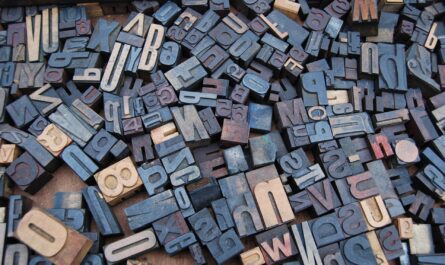What is “leisure”? The word is often considered to be simply the time spent outside of work, synonymous with ‘non-working’ time. This leaves space for too many questions to be a useful definition. Is sleep considered leisure? Watching television? What about commuting or eating dinner? Is housework leisure? Clearly, we need a more exact and helpful description.
The question, “What is leisure?” is seemingly philosophical, but practical because it relates to so much advice we hear today about a need to find rewarding hobbies and ways to reduce stress. How can we reduce stress, though, if we don’t know which activities actually help with stress? We’ve heard for decades that Americans don’t use their vacation time – perhaps it’s because we haven’t any idea what to do with it? Defining leisure more clearly will help millions of Americans to identify the sorts of activities most likely to help them de-stress and improve themselves at the same time. The aim of this essay is to arrive at a working definition for leisure.
Continuing the conversation begun in Leisure Isn’t About Not Working, It’s About Improvement, the notion of leisure is much older than the emergence of the middle class. Today’s perception of the term is a far cry from the ancient Greek notion of leisure which usually involved exertion and creation, and included activities like wrestling, athletic competitions, pottery, and play music. Their understanding was leisure required effort and was done to accomplish a purpose. This means the activity was done for its own sake, as in the playing of an instrument, painting, or woodworking. True leisure isn’t a “side hustle,” either. The leisurely painter dabs at his canvas for his own enjoyment; the leisurely violinist learns and performs Beethoven not because she needs to perform in order to eat, but for the thrill of playing iconic classical compositions. The idea that passive consumption or spending exorbitant amounts of money is leisure is a recent development.
Does leisure involve consumption?
Thorstein Veblen’s 1899 Theory of the Leisure Class describes the new phenomenon of the leisure class, an upper class which emerged in the 1850s who are neither nobility nor rulers, but wealthy enough they don’t have to work. The leisure class signal their elite position in how they spend their days and time; on frivolous purchases; by collecting collegiate degrees a status symbols, not as a requirement for their profession; in trophy hunting; and fussy or even impractical dressing.
The key argument of Veblen’s Theory, and the most identifiable feature of the leisure class, is their participation in activities which serve no economic purpose. This includes such hobbies as hunting, gambling, learning multiple languages, playing instruments, practicing grammar or writing belles lettres; all markers of much time and money to spend.
Veblen’s work considers consumption a central tenet of the leisure class. Veblen even coined the term “conspicuous waste,” in reference to the superfluous goods flaunted by this class, like fur coats, awards of distinction, the building of ostentatious houses, breeding and racing of horses, etc. His theory was based on signaling; you can’t automatically size up how much money a person has, so the leisure class developed signs which signaled to others they could afford to spend money on frivolous chattel. This elite signaling then trickles down to the working classes. Modern examples include buying (and discarding) fashionable garments every season, buying new cars every year, collecting art, or gambling. It is all conspicuous consumption designed to membership in a leisure class, thereby distancing themselves from the working class.
Does the leisure class actually encapsulate the term leisure in any way? The leisure class are concerned with appearances and maintaining their elite status. True leisure is not externally motivated like this; leisure is about nourishing and growing the mind and heart. It’s about taking the time to become a better and wiser person. However, the stigma of doing nothing all day remains in our productivity minded society; one must be able to show what they’ve done with their time and resources. For this reason, the signal aspect of Veblen’s leisure class is still very much necessary to our definition, while consumption is not.
The more ancient and Greek notions would suggest consumption is not only not required, but antithetical to leisure. What we today consider “leisure” time is mostly spent consuming, usually watching television or scrolling social media. Our more established descriptions involve building, rather than passively consuming. This would suggest true leisure is meant to enrich, not simply passing non-working time, and is not primarily concerned with consumption.
Does leisure involve creation?
Does leisure require creating something? A painting, a new understanding of a concept, a beautifully played sonata; some sort of creation one can point to and say, “This is how I’ve spent my time.” A requirement of creating something new does square nicely with Veblen’s theory. He points to the various insignias, awards, trophies, and distinctions the leisure class weave as social proof they spend their time on costly things, though only on activities not associated with manual labor:
“As seen from the economic point of view, leisure, considered as an employment, is closely allied in kind with the life of exploit; and the achievements which characterise a life of leisure, and which remain as its decorous criteria, have much in common with the trophies of exploit. But leisure in the narrower sense, as distinct from exploit and from any ostensibly productive employment of effort on objects which are of no intrinsic use, does not commonly leave a material product. The criteria of a past performance of leisure therefore commonly take the form of “immaterial” goods. Such immaterial evidences of past leisure are quasi-scholarly or quasi-artistic accomplishments and a knowledge of processes and incidents which do not conduce directly to the furtherance of human life.”
-Thorstein Veblen, The Theory of the Leisure Class
Today’s leisure class signals might include examples like Jay Leno and Jerry Seinfeld’s classic car collections; the antique and rare art collections of many upper class families; advanced degrees; learning multiple languages; involved gardens, and hunting trophies. All are examples of leisurely objects pursued at one time by the leisure class, but which trickled down over time to the working classes. In fact, trophy hunting in America, only really took off with the creation of the leisure class, around the 1850s. Every single example involves creating something – a trophy or signal – which didn’t exist before. Even going back further to the Greeks, they awarded physical competition and performed the plays written in leisure time. It would seem then, that historical examples require leisure to include the creation of some sort of social signal.
Improvement is required.
What is meant by “improvement”? Only that leisure is concerned with progress and becoming a more knowledgeable, empathetic, responsible, and well-rounded person. This ties into the signal requirement; there needs to be some demonstrable result of how one spends their time. This doesn’t necessarily mean you need to enter formal competitions, like sporting or painting competitions, but simply that whatever you choose to do, you are aiming to improve your skills and yourself. This can apply to virtually anything, of course; making wooden furniture, building birdhouses, running faster or lifting more weight, sharpening your photography skills, tightening your writing, understanding more about astrophysics; any venture where you can show improvement.
Is leisure active or passive?
Our more precise definition of leisure, then, is reserved for things like photography, studying, and gardening; the activities we do because we enjoy them and they make us better people, but don’t necessarily have a monetary incentive associated with them. Because leisure involves creating something new, it must be an active and not passive activity.
This leaves us in a quandary with so-called leisure activities. We often call things like watching television, conversation, scrolling social media, reading for enjoyment, or taking a walk leisure. These sorts of things would be considered pastimes- and there is nothing wrong with them – they simply do not fit into this more precise definition of leisure. While these can all be great activities and are certainly parts of modern life, considering them leisure seems a step too far. In order to refresh our minds, we have to engage and use our minds. Passive activities simply don’t meet this requirement. Likewise, normal healthy activities like exercise and eating aren’t included as leisure because they aren’t done with a specific goal of improvement.
A definition.
In my previous essay on the topic I concluded, “Leisure refers to purposeful activities that nourish and enrich a person. While we have more free time than ever, we engage in less true leisure time.”
Today, we’ve expanded this definition by determining leisure is active, requiring the creation of some sort of signal to show others how we’ve spent our time, and secondly, it requires some form of personal development. True leisure refers to the activities one does in their free time by creating some object in the pursuit of improving oneself.
What are the implications of understanding leisure?
Why does leisure matter? Leisure is often how measure our lives – am I able to spend my time doing the things I want to do? Joseph Pieper called leisure the basis of culture. It’s what we all work toward, and we continue to find more efficient ways to complete work, presumably to spend our time on leisure. Most of us though, aren’t actually spending time on leisure, but on those passive activities which don’t reduce stress and aren’t helping us to find fulfillment. Instead we’re just passing time.
With a clearer understanding of leisure, and by proceeding with a more precise definition like the one we’ve concluded with today, we give ourselves a better idea of the kinds of activities we want to explore. A clearer definition helps us to ask whether we’re really engaged in anything, and how we’d like to see ourselves improve. It’s the adult equivalent of when your mom told you to go play outside instead of spending all day indoors. “Find something interesting to do.”
Leisure, truly, is what gives our lives color; it’s paint on the blank canvas of a day. Leisure offers fulfillment, which is the ingredient missing from modern life. We work jobs and come home to relax, but we don’t aim for fulfillment. In the past few decades marked by positive psychology, the message has been to chase happiness. The problem is happiness is a byproduct, not an end of itself. Fulfillment is found in having the freedom to choose what you want to do and having the ability to do that thing. Choosing truly leisurely activities will go a long way toward personal fulfillment.
We’ve refined the definition of leisure to have two requirements; the active creation of a signal and involving an element of demonstrable personal improvement. What remains to be seen is whether there are more components to true leisure, or if by refining the term we can bring meaningful, widespread change to the realities of modern life.
Painting: Auf der Ligethi Puszta (1884) by von Hörmann, Theodor (1840 – 1895).




